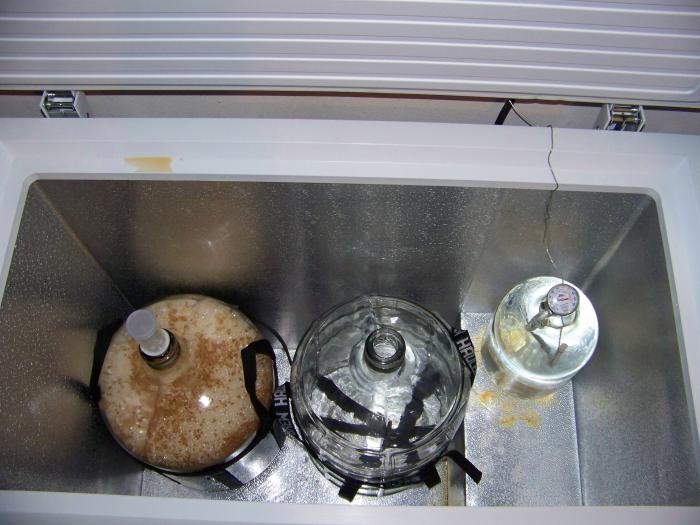ColeBeer78
Well-Known Member
The best beer I ever made is with a chamber. I couldn't believe the difference it makes. I ferment in my garage in the winter with a chamber and use the lightbulb paintcan trick. Works great!

Just acquired a chest freezer that has been converted to a keezer. It is pretty dirty and got a healthy population of mold but I think I can save it. The best part...it was free. It actually has the tower, CO2 tank and regulator, and keg connect. The lines will need to be tossed and everything seriously cleaned, but good timing.
It has a temp controller but appears to only work on the cooling side. Any recommendations for a dual control so I can heat if necessary as well as cool?
I live by the KISS principle. The added processes are going to increase the complexity of my brewing process by a fairly large factor. I really hope to see a significant improvement in my beer, which has always been pretty good. Who knows, maybe I'll brew a few really REALLY good beers. If not... I'll probably skip the fermentation chamber and cold crashing. I'll continue making yeast starters. That's something that is relatively simple and just makes good sense.














![Craft A Brew - Safale S-04 Dry Yeast - Fermentis - English Ale Dry Yeast - For English and American Ales and Hard Apple Ciders - Ingredients for Home Brewing - Beer Making Supplies - [1 Pack]](https://m.media-amazon.com/images/I/41fVGNh6JfL._SL500_.jpg)


beer that is actively fermenting will typically be at a higher temp than ambient. This can range from a couple degrees to up to something like 10 degrees. Most people tape their probe to the side of a carboy and use something to insulate it.
beer that is actively fermenting will typically be at a higher temp than ambient. This can range from a couple degrees to up to something like 10 degrees. Most people tape their probe to the side of a carboy and use something to insulate it.
Funny thing about this... I'm checking the fermenter once or twice daily and the smells that are coming out of it are pretty cool. I checked it this morning and I'm getting a ripe banana smell. Still fermenting... slowly.
I'm anxious to taste this beer... even if it is several weeks out.
It's a fairly big beer... OG 1.071. The last three 7+% ABV beers that I brewed, I fermented at room temp ~68 degrees. They all have a slightly harsh alcohol flavor. Brewed them several months ago and they haven't lost any of the harshness. I'm thinking it may be fusil alcohol that's giving it that flavor. I'm leaving them alone for another month or so to see if they mellow out any. The fermentation chamber is an effort to remedy this issue. We'll see... fingers crossed.
My fermentation chamber is in my unheated garage, so I use a dual stage controller, which will turn on a heat source if it gets too cool, and the fridge if it gets too warm. Like BigFloyd, I love being able to let the beer go through a range automatically, so if I'm starting at 62F, I'll set the heat to come on at 61F with a 1 degree variance, and set the cooling to come on at 66F with a 1 degree variance (so between 62F and 65F, it is neither heating nor cooling). I'll pitch at 62F, let the controller keep it from going below 62F or above 65F, and let the heat of fermentation ramp it up to 65F from 62F. If I'm doing a diacetyl rest, I'll manually change my controller settings and raise it up to 68-70F, and then cold crash it. I'm still experimenting with cold crashing - as was mentioned on another recent thread, cold crashing too rapidly MAY produce yeast stress and off flavors. IMO I can't say one way or the other.

Can you describe what you use as a heating element for the second stage? I ask because I'm currently building one very similar to what you describe and not sure what direction to go with the hot side....
I'm currently using a Brew Belt, which is fine for one fermenter, although I use glass carboys and it specifically says not to use on glass... I'm wanting something that will heat the ambient air rather than directly on the fermentor, so I can have 2 fermentors getting the same treatment instead of one heated and one getting the ambient only. I'm looking at a ceramic heating "bulb" but would love to hear what others use too. The light bulb in the coffee can is just too much risk for me, although if I could pick up an old ceramic light bulb socket, I might try that. I just don't want a fire in my garage!